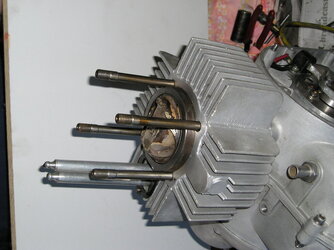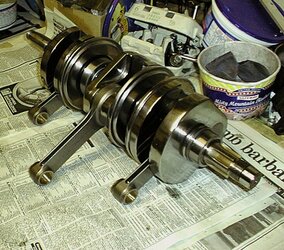Laverda SF
Hero member
Geez! Greg shimming gear caskets would seem to me a waste of time and expense if all you to do is use thicker Barrel with a Head gasket - Any combination there of ?
Just about any Gasket Co. today can punch you out a solid copper or compound barrel or head gasket to your specs for a reasonable price.
Mr Gasket, ISKY, Elelbrock, Manley, Wiseco... etc. That's what them Company specialize in.
I would shy away from modifying original cam stanchions and gear geometry.
I've no clue why he had to mill engines surfaces but guess he had his reasons.
Just about any Gasket Co. today can punch you out a solid copper or compound barrel or head gasket to your specs for a reasonable price.
Mr Gasket, ISKY, Elelbrock, Manley, Wiseco... etc. That's what them Company specialize in.
I would shy away from modifying original cam stanchions and gear geometry.
I've no clue why he had to mill engines surfaces but guess he had his reasons.
Last edited:


